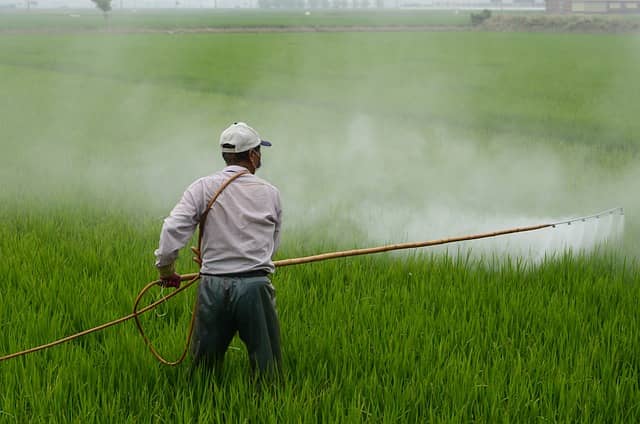Introduction
According to thermodynamics, a perfect system is defined as an idealized system that does not experience any energy loss or energy transfer to its surroundings. If we were to use a perfect system as a reference point to compare the energy efficiency of conventional farming systems, it would become apparent that there is a significant room for improvement. Conventional farming practices are associated with high energy consumption due to the extensive use of synthetic inputs such as fertilizers and pesticides, which require significant amounts of energy to produce and transport. Moreover, conventional farming practices are often characterized by a linear, one-way flow of resources, resulting in wastage and inefficiency.
The objective of this blog post is to explore the limitations and challenges posed by conventional farming methods and explore how the adoption of Integrated Farming Systems can provide solutions to overcome them.
Problems with Modern Agricultural Systems
The decline in agriculture growth rate and productivity
According to the World Bank, the global agricultural sector’s growth rate has been gradually declining over the past few decades. In the 1960s, the average annual growth rate was 3.1%, while in the 1970s, it was 2.9%. In the 1980s and 1990s, the growth rate fell further to 2.2% and 1.6%, respectively, and it was just 1.12 for 2011-2020 . Deforestation, Soil degradation, climate change, Insufficient investment in agricultural infrastructure, research, and development are some of the factors that have lead to decline in agricultural growth rate.
Shrinkage in the net cultivable area
Some of the common reasons for the shrinkage of net cultivable area are: Rapid urbanization and the expansion of cities, land degradation and desertification and natural disasters.
Increasing environmental pollution
Some problems associated with modern farming systems that lead to environmental pollution include: use of chemical fertilizers and pesticides, intensive tillage and monoculture, greenhouse gas emission.
Depleting groundwater table

Modern agriculture practices can contribute to the depletion of groundwater tables. Some of these practices include over-irrigation, cultivation of high water-demanding crops such as rice and sugarcane, increased use of groundwater and lack of water management.
The increasing cost of production and low farm income
Modern farming systems can result in increased costs of production due to various factors. Some of the factors are : high-cost inputs such as fertilizers, pesticides, and hybrid seeds; capital-intensive equipment and machinery, such as tractors, harvesters, and irrigation systems; specialized labor and technical expertise, which can result in higher labor costs; higher energy costs for irrigation, transport, and processing. Besides modern farming systems are often subject to market pressures that can drive up the cost of production and lower income for farmers, such as volatile commodity prices and increased competition from global markets.
Problems of farm labors due to large scale migration
One of the demerits of modern farming systems is the large-scale migration of labor. As modern farming systems have become more mechanized and automated, the need for manual labor has decreased, leading to a decrease in the number of farm jobs available. This has resulted in many agricultural workers leaving rural areas and migrating to urban areas in search of work, making it difficult for farmers to find workers with the necessary skills and knowledge to maintain their farms. Additionally, the decrease in the number of workers can lead to an increase in the cost of labor, making it more difficult for farmers to remain profitable.
Climate change and decrease in average rainfall
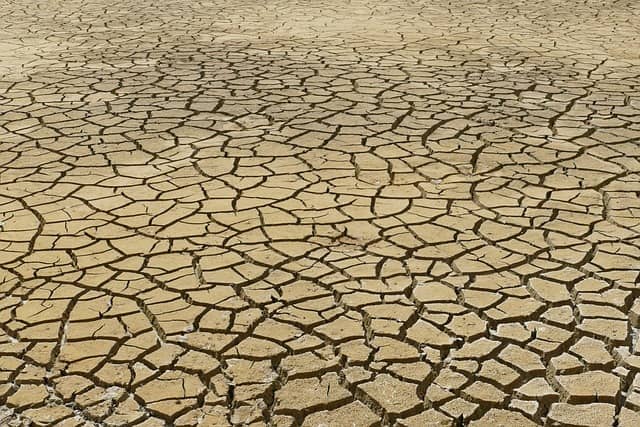
·Climate change is one of the major problems of modern farming systems, and it is having a significant impact on agriculture around the world. One of the effects of climate change is a decrease in average rainfall, which can lead to water shortages and droughts in many areas. This can have a severe impact on crops, reducing yields and making it more difficult for farmers to produce enough food to meet demand. In addition to the decrease in rainfall, climate change can also cause more extreme weather events, such as floods and heatwaves, which can damage crops and soil. This can lead to soil erosion and degradation, making it more difficult to grow crops in the future.
Is Integrated Farming System an Alternative to Conventional Farming System?
So what’s the way around? Can we employ integrated farming approach to address the disadvantages of conventional farming systems? I think answer is very obvious. Integrated farming promote a circular, interconnected approach to resource management, where waste products are recycled and reused, leading to improved energy efficiency and reduced environmental impact. By utilizing natural processes such as nutrient cycling and biological pest control, sustainable farming systems can reduce their dependence on synthetic inputs, leading to lower energy consumption and reduced greenhouse gas emissions.
Integrated Farming System is a sustainable agricultural practice that has the potential to revolutionize the way we grow food. It is a system where multiple farming activities are connected together in a manner to ensure maximum utilization of resources and reducing the risk of crop failure.
The beauty of Integrated Farming System lies in its ability to provide additional income to farmers and food for small scale farming households. It involves the recycling of by-products and interconnected nutrient flow of one system as input for the other, resulting in maximized production from a unit area at a minimum cost.
Concepts of Integrated Farming System
Imagine you’re a farmer, with a small piece of land, and you want to maximize your profits while also being mindful of the environment. That’s where integrated farming systems (IFS) come in!
An integrated farming system is a way of farming that combines different components, like crops, livestock, fish, and forestry, in one system. By doing this, you’re able to create a self-sustaining ecosystem that’s efficient and eco-friendly.
So, how does it work? Well, for starters, you can use the waste products from one component as inputs for another. For example, the manure from your livestock can be used to fertilize your crops, and the crop residues can be used as feed for your animals. This minimizes waste, saves money, and reduces your environmental impact.
But there’s more to it than just reducing waste. By combining different components, you’re able to increase your productivity per unit area per unit time. For example, you can use intercropping, where you grow different crops together, to maximize the use of your land. You can also raise animals in an integrated system, where they graze on your crop residues and improve the soil quality with their manure. All of this leads to increased productivity and more profit!
And speaking of profit, an integrated farming system can also increase your total income by diversifying your sources of revenue. Instead of relying on one crop or animal, you can sell a variety of products, like fruits, vegetables, meat, eggs, and milk. Plus, you can sell other components like fish or wood from your forestry operation. This not only increases your income, but it also makes your farm more resilient to market fluctuations.
Lastly, an integrated farming system can help you make the most of your family labor. By having a variety of components, you can provide employment opportunities for your family members all year round. This not only gives them a stable income, but it also strengthens your family unit.
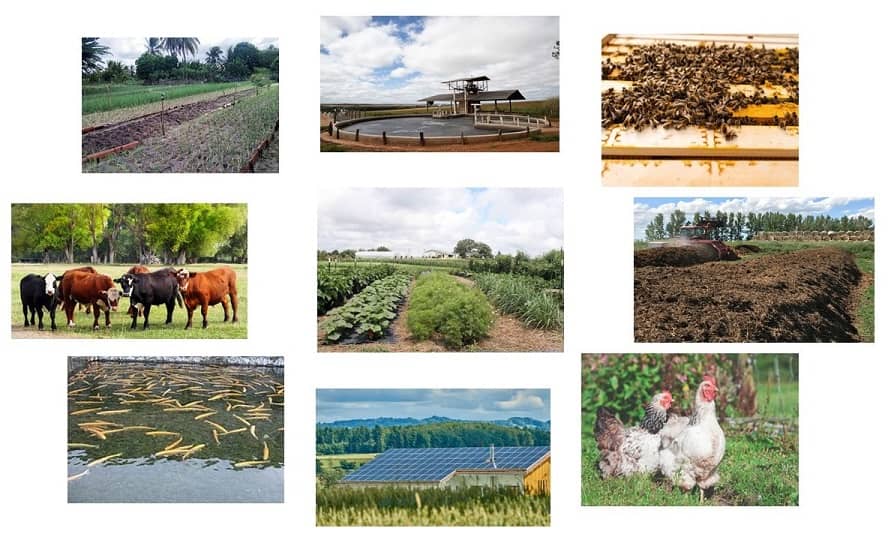
So concept of Integrated Farming system can be summarized in the following points:
- An arrangement of recycling products/ by- products of one component as input to another linked component
- Reduction in cost of production
- Increase in productivity per unit area per unit time
- Increase in total income of farm
- Effective utilization of family labors around the year
Overall, an integrated farming system is a way to make a farm more sustainable, efficient, and profitable. By combining different components and making the most of available resources, a farmer can create a thriving ecosystem that benefits him, his family, and the environment!
Elements of Integrated Farming system
An integrated farming system is like a jigsaw puzzle, with different pieces that fit together to create a beautiful picture. Each piece, or component, plays a crucial role in making the system sustainable and profitable.
Crops
One of the main elements is crops, which can include various types of plants that are grown in the same field or in rotation with one another. By growing a variety of crops, farmers can increase their productivity and reduce the risk of crop failure due to disease or pests.
Livestock
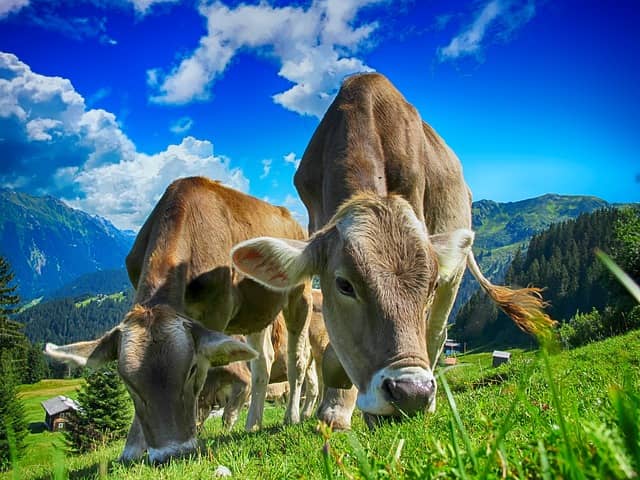
It is another important component, providing a source of meat, milk, eggs, and fertilizer. When combined with crops, livestock can graze on crop residues, improving soil quality and reducing the need for synthetic fertilizers.
Fish
It is another component that can be integrated with other elements of the system, such as crops and livestock. By growing fish in ponds or tanks, farmers can recycle nutrients and reduce waste, while also providing a source of protein.
Forestry
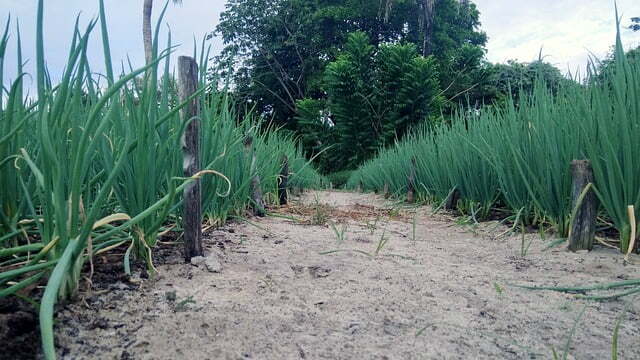
It is also a key element, providing a source of wood, as well as environmental benefits like reducing soil erosion and providing shade to crops and animals. Agroforestry, which involves combining trees with crops or livestock, can also increase biodiversity and improve soil quality.
Renewable Energy
To make an integrated farming system truly sustainable, renewable energy can also be incorporated. Solar panels, wind turbines, and biogas production can all be used to power the farm and reduce reliance on fossil fuels.
Soil and water management
These are also crucial components, with practices like mulching, crop rotation, and drip irrigation all working together to improve soil quality and reduce water waste.
Organic waste management
It is another key element, with manure and crop residues being recycled to provide nutrients for crops and reduce waste.
By combining these different components, farmers can create a sustainable and efficient system that not only provides food and income, but also protects the environment and conserves resources.
Advantages of Integrated Farming Systems
Integrated farming systems offer many advantages to farmers and communities
Profitability
This means that integrated farming system can save farmers money by using waste materials from one component of the farm as inputs for another component. For example, animal waste can be used as fertilizer for crops, reducing the need for expensive chemical fertilizers. This can help farmers to reduce their costs and increase their profits. By eliminating middlemen interference in the input process, farmers can also get better prices for their products, further increasing their profitability. Overall, integrated farming system can help farmers to achieve better financial outcomes and run their businesses more efficiently.
Potentiality or Sustainability
By avoiding use of chemical fertilizers, the farm can continue to produce high-quality crops and products over a longer period of time without depleting the soil or other resources. Integrated farming system also provides an opportunity to diversify the production base, which can help to mitigate the risks associated with monoculture farming. By diversifying the farm, the potential for sustainable production is increased.
Balanced Nutrition
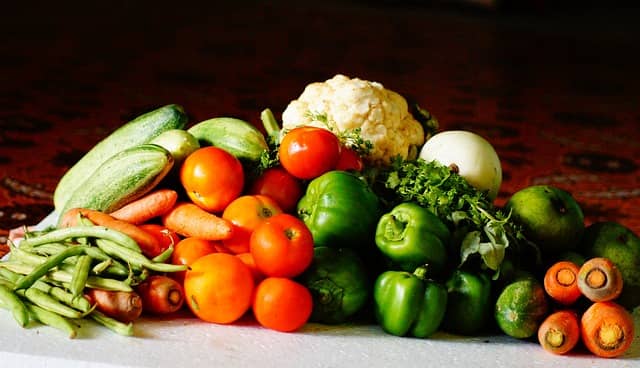
Integrated farming system can link components of varied nature, which enables farmers to produce a variety of crops and animal products that provide a balanced and diverse source of nutrition. This means that farmers can produce different types of fruits, vegetables, grains, and animal products like meat, dairy, and eggs. By diversifying the production base, integrated farming system can ensure that communities have access to a variety of foods that can help to prevent malnutrition and improve overall health.
https://www.traditionrolex.com/13
Environmental Friendly
Integrated farming system can play a crucial role in minimizing environmental pollution by effectively recycling waste materials through appropriate linkages. Waste materials generated in one component of the system can be used as inputs for another component, thereby reducing waste and minimizing the environmental impact of farming practices. Use of animal manure reduces the need for chemical fertilizers that can pollute soil and water sources. Similarly, crop residues can be used as animal feed, which reduces waste and helps to maintain a sustainable production system. By promoting sustainable land use practices, such as conservation tillage and agroforestry, integrated farming system can help to preserve natural resources like soil and water for future generations. By minimizing environmental pollution, integrated farming system can contribute to a healthier and more sustainable environment for all.
Recycling
Integrated farming system provides an effective solution to the problem of waste management in agriculture by promoting the recycling of waste materials. The by-products and waste generated from one component of the farming system can be used as inputs for another component, thereby reducing waste and creating a closed loop system.
Income Year-Round
One of the key advantages of integrated farming system is that it can provide a steady flow of income to farmers throughout the year. By integrating different enterprises, such as crops, livestock, and non-timber forest products, farmers can generate income from a variety of sources. For example, a farmer might grow vegetables and fruits, raise poultry and livestock, and cultivate mushrooms or honeybees. This diversified income stream can help to stabilize the farmer’s income and reduce the risk of crop failures or other setbacks. Additionally, the year-round income provided by integrated farming system can help to reduce poverty and increase economic resilience in rural communities. By generating income from a variety of sources, integrated farming system can help to improve the economic and social well-being of farmers and their families.
Adoption of New Technology
Integrated farming system can also encourage the adoption of new technologies by providing financial benefits to farmers. When farmers see the financial benefits of integrated farming system, they are more likely to invest in new technologies that can improve their productivity and profitability. For example, a farmer might invest in a new irrigation system, a better seed variety, or improved livestock housing. By adopting new technologies, farmers can improve the efficiency and sustainability of their operations, and increase their yields and profits
Saving Energy

Integrated farming system can help save energy by identifying alternative sources and reducing dependence on fossil fuels. The organic waste available in the system can be effectively recycled using biogas technology, which generates renewable energy and postpones the energy crisis.
Solving Fodder Crisis
Integrated farming system can address the problem of fodder scarcity by effectively utilizing every piece of land area. Planting perennial legume fodder trees on field borders and fixing atmospheric nitrogen can greatly enhance the production of high-quality fodder for animal components linked. This helps relieve the problem of non-availability of quality fodder, particularly during the dry season.
Solving Fuel and Timber Crisis
Through the implementation of Integrated farming system, farmers can link agroforestry components in an appropriate manner to increase the production of fuel and industrial wood without negatively affecting crop growth. This can help to reduce deforestation and preserve natural ecosystems, while also addressing fuel and timber crises.
Employment Generation
Integrated farming system offers a range of employment opportunities as it combines different enterprises, including crop production, livestock rearing, and agroforestry. This creates a higher demand for labor and can help reduce the problem of underemployment in rural areas. Moreover, since integrated farming system offers income year-round, it provides ample scope for family labor to be employed throughout the year.
Types of Integrated Farming Systems
Crop-livestock farming system
Crop-livestock farming system is a type of integrated farming system that combines crop and animal production on the same farm. This approach involves integrating crop production and livestock rearing in a way that allows for the efficient use of resources and maximizes the benefits of each component.
In a crop-livestock farming system, the crops provide food and forage for the animals, while the animals provide manure for the crops and can also serve as a source of income through the sale of animal products such as milk, meat, and eggs.
For example, a farmer can grow a variety of crops such as maize, soybeans, and alfalfa, and at the same time keep a herd of cattle, goats or sheep on the same farm. The animals will graze on the crops residue, and also produce manure that can be used as fertilizer for the crops. The farmer can also sell the milk or meat products to earn extra income.
Crop-livestock –fishery farming system
In this farming system, crops are grown to feed livestock and fish, and the manure produced by the animals is used to fertilize the crops. The fish pond is also integrated into the system, and the fish waste is used as fertilizer for the crops. The crop residues and waste products are then fed to the livestock and fish, creating a closed loop system that minimizes waste and maximizes efficiency.
For example, a farmer can grow corn and soybeans, feed them to cattle and pigs, and then use the manure to fertilize the crops. The farmer can also raise fish in a pond, using the fish waste to fertilize the crops and feeding the fish with the crop residues and waste products.
Crop-livestock-poultry-fishery farming system
In this system, crops and pasture are used to feed the livestock and poultry, while the manure produced by these animals is used as a fertilizer for the crops. The fishery component, on the other hand, provides a source of protein and income for the farmer.
For example, a farmer can use a portion of his land to grow crops such as maize and soybeans. He can also have a section of the land dedicated to growing grass and legumes for the livestock and poultry. The livestock and poultry are then used to produce meat, milk, and eggs, while their manure is used to fertilize the crops.
The fishery component can be incorporated by constructing ponds or tanks for fish farming. The farmer can then use the fish to supplement his family’s diet and sell any excess to generate additional income.
Crop-Fishery-Poultry farming system
The Crop-Fishery-Poultry farming system is another type of integrated farming system that combines crop production, fish farming, and poultry production. In this system, crops such as rice, wheat, or maize are grown in the fields while fish are raised in ponds or tanks. Poultry, such as chickens or ducks, are also raised on the same farm.
The waste produced by fish and poultry is used to fertilize the crops, reducing the need for chemical fertilizers. Additionally, the crops provide shade and cover for the fish ponds, which helps to regulate the water temperature and reduce algae growth.
This system allows for the efficient use of resources and maximizes productivity, as each component of the system complements the others. For example, the fish and chickens feed on insects and weeds, which can reduce the need for pesticides in the crop fields. Similarly, the poultry can eat leftover fish feed and provide manure to fertilize the crops.
The Crop-Fishery-Poultry farming system can provide a diverse range of food products, including crops, fish, and poultry, which can improve food security for farmers and their communities. It also promotes sustainability by reducing waste and the use of harmful chemicals.
Crop-livestock-fishery-vermicomposting farming system
This type of integrated system combines crop production, animal husbandry, fishery, and vermicomposting. In this system, crops are grown alongside animal and fish components, and the organic waste produced by these components is used for vermicomposting to produce nutrient-rich compost that can be used to fertilize crops.
For example, a farmer might raise chickens and use their manure for vermicomposting, while also growing vegetables and fish in a pond. The fish waste can be used to fertilize the vegetables, while the vermicompost can be used to fertilize both the vegetables and the feed for the chickens. This system creates a closed loop where waste is recycled and reused, minimizing the need for external inputs and reducing environmental impact. It also provides multiple sources of income for the farmer and increases overall productivity.
Crop-livestock-forestry farming system
In this system, the crops provide food and feed for the livestock while the livestock provide manure for the crops and also help in weed and pest control. Meanwhile, forestry practices help to provide additional income through the production of timber, firewood, and non-timber forest products.
For example, a farmer could plant trees such as eucalyptus or acacia as part of their forestry practice. These trees can provide shade for the livestock, act as windbreaks, and help to prevent soil erosion. In addition, the farmer could also graze their livestock on the land between the tree rows, which helps to control weeds and pests while also providing manure for the crops.
Agri-silviculture system
Agri-silviculture is an integrated farming system that involves the combination of agricultural crops and trees. In this system, farmers plant trees alongside their crops to create a sustainable and productive farming environment. The trees serve many purposes, such as providing shade, improving soil fertility, and conserving water. The crops grown in this system can be annuals or perennials, depending on the tree species and their growth habits.
For example, farmers may plant nitrogen-fixing trees like Acacia or Alnus in their fields to improve soil fertility and provide shade for crops like coffee or cocoa. The trees also help to reduce water runoff and soil erosion. In addition to the ecological benefits, agri-silviculture can also provide economic benefits. Farmers can earn income from the sale of tree products, such as fruits, nuts, and timber, in addition to their crop yields.
Agri-horti-silvi-pastoral system
Agri-horti-silvi-pastoral system is a type of integrated farming system that combines crop production, horticulture, agroforestry, and livestock grazing in a single farming operation. This system is characterized by the integration of different components that work together to achieve higher productivity and profitability while maintaining sustainability.
In this system, the crops, such as cereals, pulses, and oilseeds, are grown along with fruit trees and vegetables in a mixed cropping system. The trees and shrubs are grown in an agroforestry system to provide shade, prevent soil erosion, and maintain soil fertility. The livestock, such as cattle, sheep, and goats, graze in the pasture lands and also help in providing manure for crop production.
The agri-horti-silvi-pastoral system offers several benefits. The combination of different components provides a more stable income for farmers throughout the year. The system also helps in soil conservation, nutrient cycling, and maintenance of biodiversity. It reduces the pressure on natural resources and promotes sustainable land use practices.
Apiculture as a part of Integrated Farming System
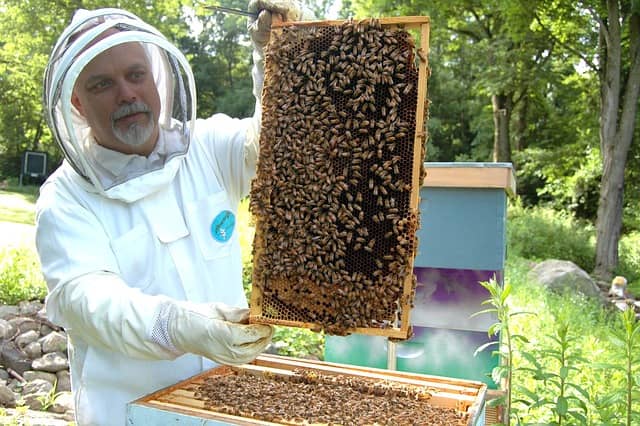
Apiculture, or beekeeping, can be a part of an integrated farming system in several ways. Bees can be utilized for pollination in crop production, which can increase crop yields and quality. In addition, beekeeping can be integrated with livestock and crop production systems. For example, honeybees can be used to pollinate crops, and their hives can be placed near grazing areas to increase forage production for livestock. Honey and other bee products can also be sold as a value-added product, generating additional income for the farmer.
Furthermore, beekeeping can be combined with agroforestry, where trees are grown in combination with crops or livestock. This can provide bees with diverse sources of pollen and nectar and can also enhance the biodiversity of the farming system. Beekeeping can also be integrated with vermicomposting, where bee waste can be used as a nutrient source for composting worms.
Overall, integrating beekeeping into an integrated farming system can provide multiple benefits, including improved crop yields, enhanced biodiversity, additional income streams, and sustainable use of resources.
Conclusion
In conclusion, integrated farming systems offer a sustainable and efficient way to utilize natural resources, increase productivity, and improve the livelihoods of farmers. By combining different components such as crops, livestock, fisheries, and forestry, waste materials are effectively recycled, environmental pollution is minimized, and the potential for year-round income generation is maximized. integrated farming system salso encourages the adoption of new technologies and can help alleviate energy and fodder crises, while creating employment opportunities for farmers. Ultimately, the benefits of integrated farming systems go beyond financial gains, as they contribute to a more resilient and ecologically sustainable agricultural system. By embracing integrated farming system, farmers can promote both economic prosperity and environmental stewardship.

